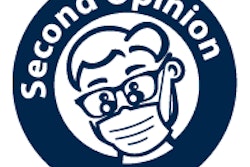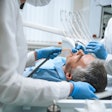
The first class of dental students educated alongside dental therapy students at the University of Minnesota were less inclined to support care for underserved populations during their senior year than their freshman year, according to a new study. However, similar research shows the trend is not limited to that one class.
Dental students tend to feel less responsible for helping the needy regardless of whether they are educated with dental therapists or not. Lead author Priscilla Flynn, MPH, DrPH, and colleagues explored this phenomenon in a new study published in the Journal of Dental Education (February 1, 2017, Vol. 81:2, pp. 162-168).
"We observed that the introduction of dental therapists brought heightened awareness of oral health disparities to the dental student body," wrote Flynn, an assistant professor at the University of Minnesota School of Dentistry, and colleagues. "The question arose as to how the introduction of this new oral health provider would affect dental students' educational experience and their attitudes toward treating underserved populations."
Students feel less inclined to help over time
Dental schools have long served in-need communities and encouraged students to care for vulnerable populations during school and after graduation. However, since health disparities still exist even with these measures, a new oral health workforce that includes dental therapists is being deployed in Minnesota and some other states. The researchers wanted to see how inclined dental students who were educated with dental therapy students were to help vulnerable populations.
“The results showed that the students' attitudes changed over the course of their dental education.”
To test how the students' attitudes changed over time, Flynn and colleagues gave 98 dental students in the University of Minnesota School of Dentistry class of 2013 a survey during each of their four years. The 29-question survey measured the students' attitudes toward caring for underserved populations.
The questions evaluated how much society in general, dentists, and individuals were responsible to provide care for the needy or those who cannot pay. Questions fell into four domains:
- Societal expectations: How much are the government and religious institutions responsible for providing care to the needy?
- Dentist/student responsibility: How much should dentists and dental students be concerned about and provide care to the needy or those who cannot pay?
- Personal efficacy: How much did the individual feel personally responsible for providing care to the needy?
- Access to care: Is dental and oral healthcare a right, even for those who cannot pay?
The students had significantly less positive attitudes toward societal expectations and personal efficacy by their fourth year than at their first year. The other domains, dentist/student responsibility and access to care, also declined but not a significant amount.
| Students' attitudes about providing care for the needy | |||
| Domain | 1st year score | 4th year score | Statistically significant? |
| Societal expectations | 19.2 out of 30 | 18.3 out of 30 | Yes |
| Dentist/student responsibility | 29.6 out of 40 | 28.8 out of 40 | No |
| Personal efficacy | 16.7 out of 20 | 16.0 out of 20 | Yes |
| Access to care | 15.8 out of 25 | 14.2 out of 25 | No |
"The results showed that the students' attitudes changed over the course of their dental education," Flynn and colleagues wrote. "A reduction in overall positive attitude was observed between the first and second years followed by further reduction in the third year. However, increased positive attitudes were noted between the third and fourth years as students neared graduation."
Although this was the first study to include a class educated with dental therapy students, the findings do not differ much from previous studies. Flynn and colleagues mentioned two other studies using the same survey that found a similar overall decline in positive attitudes, and they had statistically significant declines in three or all four of the domains instead of two.
Why do attitudes get less positive?
Flynn and colleagues suggested students' interactions with their dental therapy peers and dentistry faculty may have impacted their attitudes.
"Given that dental student and faculty attitudes at the University of Minnesota were generally negative or ambivalent about dental therapists at the time our study was initiated, any positive impact of interprofessional education may have been 'canceled out' by these opposing factors," the authors wrote.
However, the differences in the current study results from other research cannot be solely attributed to dental therapists, they noted. The class came of age during the height of the recession, so economics also could play a role in the students' declining attitudes, they added.
Flynn and colleagues pointed to a study that found Canadian and U.S. dentists felt a responsibility to treat in-need populations, but they also recognized that dentistry is a business and they had to take into account economic feasibility. They suggested that, because attitudes in the dentist/student responsibility and access-to-care domains did not significantly decrease, the students in their study may be feeling a similar pressure as they learn what the practice of dentistry is really like.
"Those domains taken together may indicate that the students did not think that all people have a right to dental care regardless of ability to pay if the dentist is expected to provide free dental care," the authors wrote. "Therefore, our healthcare system and related economic environment may be the critical factors that shape student attitudes and eventual practice patterns."
Do dental therapists have an impact on students' beliefs?
The authors acknowledged that their study had a number of shortcomings. First, it did not include a comparison group, such as the class before dental therapists were introduced or a class of the same year at another university. In addition, it accounted for the views of fewer than 100 dental students at one institution in a traditionally liberal state and, therefore, may not be representative of the views of other U.S. dental students.
In addition, the response rate to the survey varied across all four years, with a large dip during senior year. So, the results may have differed if the response rate was higher for that year.
Furthermore, although the survey was anonymous, students may have provided answers seen as socially acceptable or more correct than the ones they most agreed with, the authors noted.
Despite its flaws, the survey findings reinforced that dental students' attitudes toward providing care for the needy grow less positive over time, even with the introduction of dental therapists. Flynn and colleagues suggested that a new curricular thread with interprofessional teams may help sustain positive attitudes about treating vulnerable populations for all four years.
"This study found that dental students' attitudes toward treating underserved populations were generally positive over four years of training," the authors concluded. "However, their positive attitudes declined over time despite education with dental therapy students, a new oral healthcare professional introduced specially to reduce dental access disparities."



















